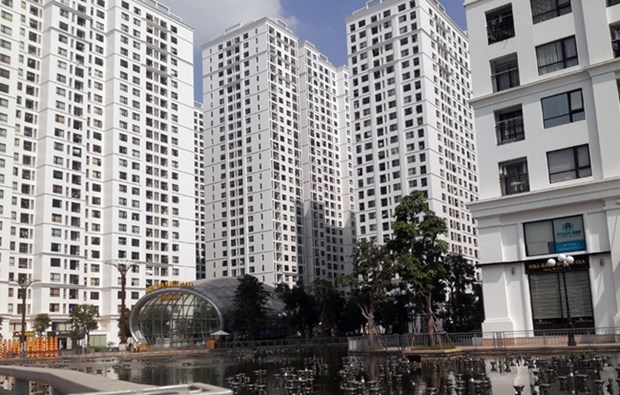Local property market still remains positive in Q1
The positive development of the local economy was the continued growth of the domestic property market in the first quarter of this year, according to experts.
 Vingroup’s Times City Complex in Hanoi (Photo: VNA)
Vingroup’s Times City Complex in Hanoi (Photo: VNA)Hanoi (VNA) - The positive development of the local economy was the continued growth of the domestic property market in the first quarter of this year, according to experts.
The General Statistics Office reported that property trading in the first quarter gained a growth of 3.43 percent year-on-year (y-o-y), the highest recorded growth rate since 2012.
The Ministry of Construction said in March, that Hanoi had 1,200 successful transactions on the property market, and HCM City had 1,150. The successful transactions belonged to the projects that were developed as schedule, had a reasonable and flexible payment method and were owned by reputed investors.
Meanwhile, according to Jones Lang LaSalle Vietnam (JLL Vietnam), one of the foreign real estate services firms in Vietnam, despite the lower GDP growth compared to the first quarter in 2015, the number was still higher than first quarters of the 2011 to 2014 periods. This was partly due to the impact of climate change to agricultural production. It is too early to say whether the economy will slow down this year as Vietnam’s economic growth typically accelerates towards the year-end.
The company’s quarterly reports on the property market in Hanoi and HCM City said that Foreign Direct Investment disbursement as well as newly registered capital in the first quarter of this year increased on a y-o-y basis. This confirmed that Vietnam continues to be an attractive investment destination for foreign investors. Real estate ranked second in attracting FDI during the quarter, as newly registered capital reached nearly 240 million USD from a total of 11 projects.
JLL Vietnam reported the residential market of both HCM City and Hanoi continued to achieve positive outcomes. Total new supply in both cities reached nearly 20,000 newly launched units in the first quarter of this year. The total number of units sold was recorded at 18,000 units, which is an impressive figure compared to that of recent years. It can be seen the market in the first quarter continued its uptrend witnessed in 2015, with numerous projects achieving sales rates of up to 90 percent at launched.
Condominium prices continued the upward movement between 1 percent and 2 percent per quarter as expected. JLL Vietnam believed that the market would maintain this tendency in the foreseeable future.
Savills Vietnam also agreed that the domestic property market developed stably in the first quarter of this year.
Its quarterly reports on real estate markets said that in Hanoi there were more than 5,600 units sold, a decrease of 13 percent quarter-on-quarter (q-o-q), but unchanged y-o-y.
Tu Liem district continued to record the largest sales with a 24 percent market share. Grade B still led the market with more than a 66 percent share. In HCM City, transaction volume was approximately 6,300 units, down 18 percent q-o-q but up 49 percent y-o-y.
CBRE Vietnam Ltd Company said in its quarterly reports that in the Hanoi property market, high-end and mid-end segments dominated sales in this quarter, with market shares of 48 percent and 36 percent respectively. Low-end segment saw a dip in sales, which could be attributed to the recent changes in the implementation of the 30 billion VND package. The credit facility will soon expire by June 2016, according to Circular 11/2013/TT-NHNN, which has started affecting buyers of the affordable sector.
“The Vietnamese property market has seen 25 years of development with various ups and downs. The market is developing and maturing at a faster rate than previously seen. Developers, investors, banks and government authorities are more alert to market dynamics and prudent in their actions and roles,” Stephen Wyatt, general director of JLL Vietnam, said.
“JLL believe in strong parameters and development of the property market in the future, and 2016, in particular, will remain a year of promising prospects despite global challenges.”
However, CBRE Vietnam said there was a proposal of a draft amended Circular 36 regarding limits and ratios of bank financing to the property market to continually improve risk management in banking systems and encourage credit flow into other industries rather than the property segment.
The change, if approved, would also create difficulties for property developers, investors, and buyers, especially as the types of financing among local developers are currently limited largely to bank financing.
Moving forward, the West and South West still gather the most in terms of number of units, accounting for 75 percent of total supply, CBRE Vietnam said. Besides, Ba Dinh district was expected to welcome three high-end projects, supplying 488 units. Given the strong supply in the pipeline and a seemingly strong sales, the market might be stabilising after experiencing unprecedented growth in 2015.-VNA













